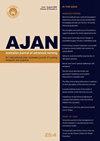The impact of using an academic electronic medical record program on first-year nursing students’ confidence and skills in using E-documentation: a quasi-experimental study
IF 1.3
4区 医学
Q3 NURSING
引用次数: 0
Abstract
Objective: To evaluate the impact of using an academic electronic medical record program on first-year nursing students’ confidence and skill in E-documentation after their hospital clinical placement. Background: Registered nurses are the largest user group of health information technology systems such as patient electronic medical records (eMR). As such, nurse undergraduate programs need to reflect contemporary practices and respond to emerging trends including digital technology, however integration of eMR learning has not occurred in many countries. To address this gap, a fit-for-purpose academic eMR simulation program was developed by nursing academics and a university Learning Design Department member. Study Design and Methods: A quasi-experimental study design, with self-administered pre-test, post-test surveys, was used with a convenience sample of all first-year nursing students at one regional university in NSW Australia in 2019 and 2021. Results: A total of 105 students completed the surveys (9.7% pre, and 7.4% post-test survey). Only 23% of respondents received training during hospital clinical placement on eMR and electronic observation charts. There was a significant increase in participant confidence and knowledge in documenting in electronic adult observational charts and notes after using the academic eMR program and attending clinical placement. Three themes emerged from the qualitative data: preparation for practice; more exposure increases confidence; and we can’t forget the patient. Conclusion: Students acknowledged the need for repeated practice using an academic eMR program in university learning environments to ensure they would be work-ready. The identified challenge was the communication barrier (computer on wheels) and the potential negative impact on person-centred care and therapeutic communication. Implications for research, policy and practice: Further research is required to determine whether repeated practice with electronic documentation is best placed within a curriculum to increase learner confidence. Simulations that incorporate workstations on wheels should be tested to determine best practice for therapeutic communication. What is already known about this topic? Registered nurses are the largest user group of health information technology systems. Nursing undergraduate program needs to reflect contemporary practices including digital technologies. Integration of eMR education in undergraduate nursing programs has not occurred in many countries. What this paper adds: Evaluation of a fit-for-purpose academic electronic medical record program integrated into an undergraduate nursing student’s curriculum. There was a significant increase in participant confidence and knowledge in documenting in electronic adult observational charts and notes after using the academic eMR program. Digital technology education tailored for students of different age groups may be required.使用学术电子病历计划对一年级护理学生使用电子文档的信心和技能的影响:一项准实验研究
目的:评价使用学术电子病历程序对护理一年级学生临床实习后电子文档信心和技能的影响。背景:注册护士是患者电子病历(eMR)等卫生信息技术系统的最大用户群体。因此,护士本科课程需要反映当代实践,并应对包括数字技术在内的新兴趋势,然而,许多国家尚未实现电子病历学习的整合。为了解决这一差距,护理学者和大学学习设计系的一名成员开发了一个适合目的的学术电子病历模拟程序。研究设计和方法:采用准实验研究设计,采用自我管理的前测试和后测试调查,方便样本为2019年和2021年新南威尔士州一所地区大学的所有一年级护理专业学生。结果:共105名学生完成问卷调查,其中测前问卷占9.7%,测后问卷占7.4%。只有23%的受访者在医院临床实习期间接受过电子病历和电子观察图表的培训。在使用学术电子病历计划和参加临床实习后,参与者在记录电子成人观察图表和笔记方面的信心和知识显著增加。从定性数据中出现了三个主题:为实践做准备;更多的曝光增加了信心;我们不能忘记病人。结论:学生们承认需要在大学学习环境中反复练习使用学术电子病历程序,以确保他们为工作做好准备。确定的挑战是沟通障碍(车轮上的计算机)以及对以人为本的护理和治疗沟通的潜在负面影响。对研究、政策和实践的影响:需要进一步的研究来确定电子文档的重复练习是否最好地放在课程中,以提高学习者的信心。应该测试将工作站放在轮子上的模拟,以确定治疗沟通的最佳实践。关于这个话题我们已经知道了什么?注册护士是卫生信息技术系统的最大用户群体。护理本科课程需要反映包括数字技术在内的当代实践。许多国家尚未将电子病历教育纳入本科护理课程。本文补充的内容:评估一个适合目的的学术电子病历程序整合到本科护理学生的课程。在使用学术电子病历程序后,参与者在记录电子成人观察图表和笔记方面的信心和知识显著增加。可能需要为不同年龄组的学生量身定制数字技术教育。
本文章由计算机程序翻译,如有差异,请以英文原文为准。
求助全文
约1分钟内获得全文
求助全文
来源期刊
CiteScore
2.30
自引率
7.10%
发文量
27
审稿时长
>12 weeks
期刊介绍:
The Australian Journal of Advanced Nursing publishes a wide variety of original research, review articles, practice guidelines, and commentary relevant to nursing and midwifery practice, health- maternity- and aged- care delivery, public health, healthcare policy and funding, nursing and midwifery education, regulation, management, economics, ethics, and research methodology. Further, the journal publishes personal narratives that convey the art and spirit of nursing and midwifery.
As the official peer-reviewed journal of the ANMF, AJAN is dedicated to publishing and showcasing scholarly material of principal relevance to national nursing and midwifery professional, clinical, research, education, management, and policy audiences. Beyond AJAN’s primarily national focus, manuscripts with regional and international scope are also welcome where their contribution to knowledge and debate on key issues for nursing, midwifery, and healthcare more broadly are significant.

 求助内容:
求助内容: 应助结果提醒方式:
应助结果提醒方式:


